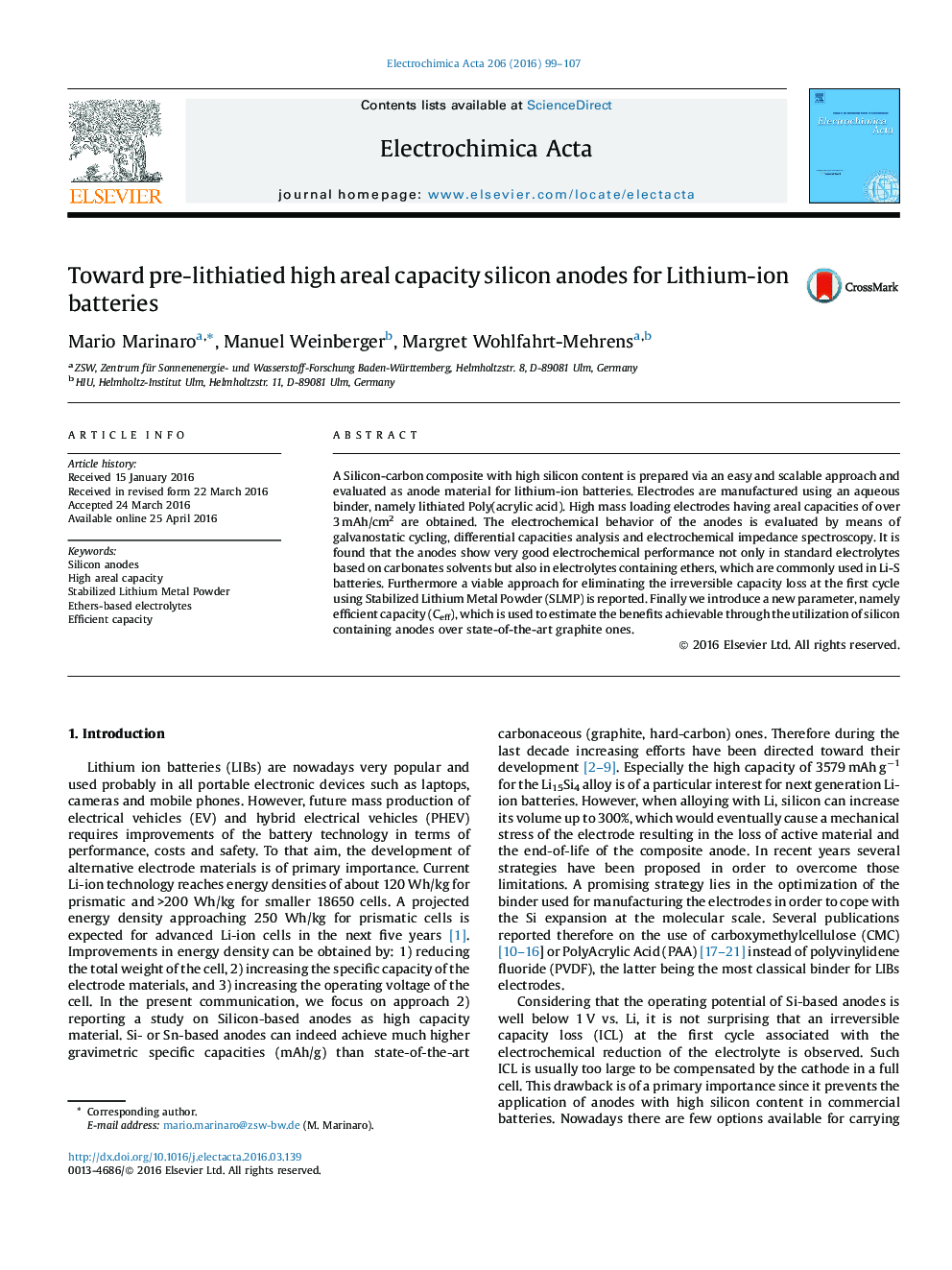| Article ID | Journal | Published Year | Pages | File Type |
|---|---|---|---|---|
| 6607172 | Electrochimica Acta | 2016 | 9 Pages |
Abstract
A Silicon-carbon composite with high silicon content is prepared via an easy and scalable approach and evaluated as anode material for lithium-ion batteries. Electrodes are manufactured using an aqueous binder, namely lithiated Poly(acrylic acid). High mass loading electrodes having areal capacities of over 3Â mAh/cm2 are obtained. The electrochemical behavior of the anodes is evaluated by means of galvanostatic cycling, differential capacities analysis and electrochemical impedance spectroscopy. It is found that the anodes show very good electrochemical performance not only in standard electrolytes based on carbonates solvents but also in electrolytes containing ethers, which are commonly used in Li-S batteries. Furthermore a viable approach for eliminating the irreversible capacity loss at the first cycle using Stabilized Lithium Metal Powder (SLMP) is reported. Finally we introduce a new parameter, namely efficient capacity (Ceff), which is used to estimate the benefits achievable through the utilization of silicon containing anodes over state-of-the-art graphite ones.
Related Topics
Physical Sciences and Engineering
Chemical Engineering
Chemical Engineering (General)
Authors
Mario Marinaro, Manuel Weinberger, Margret Wohlfahrt-Mehrens,
